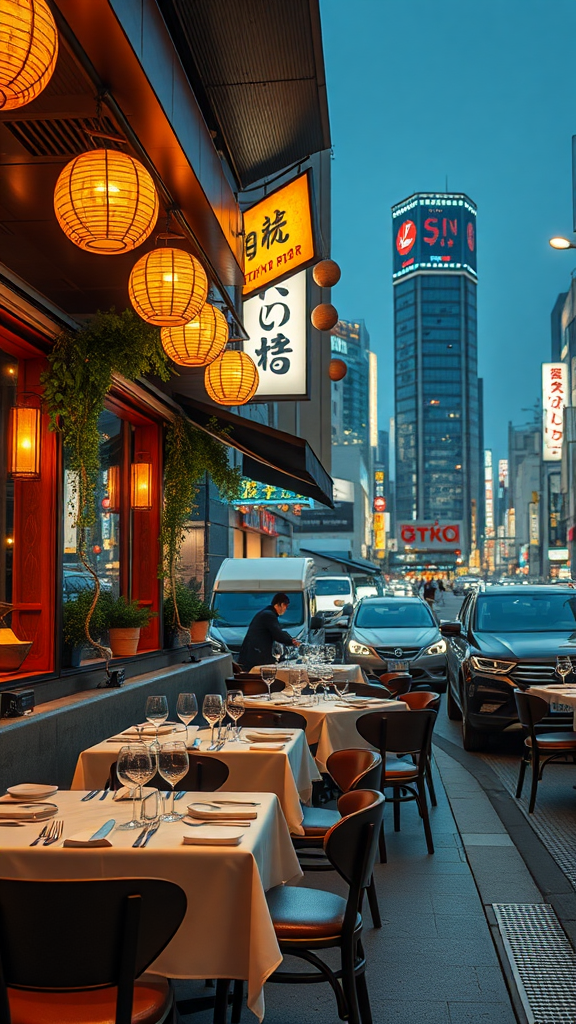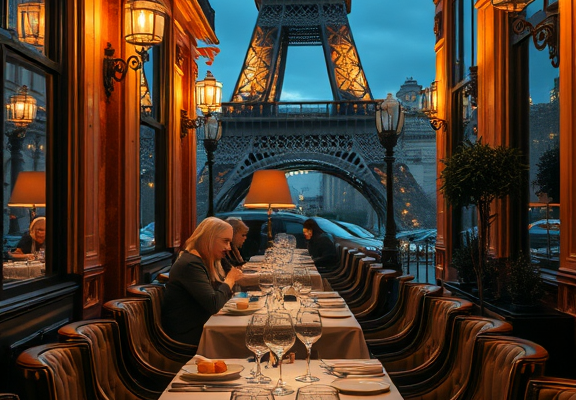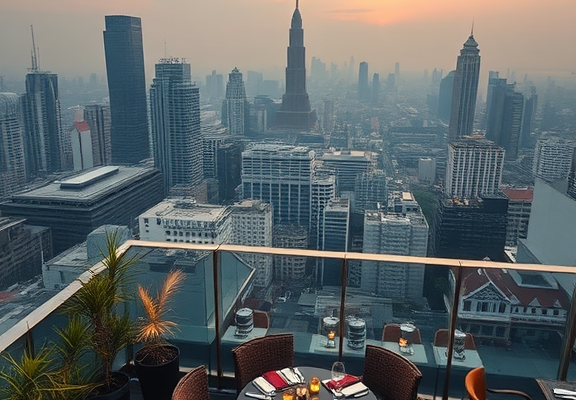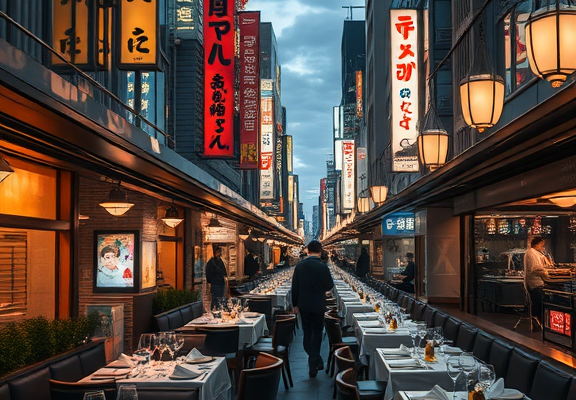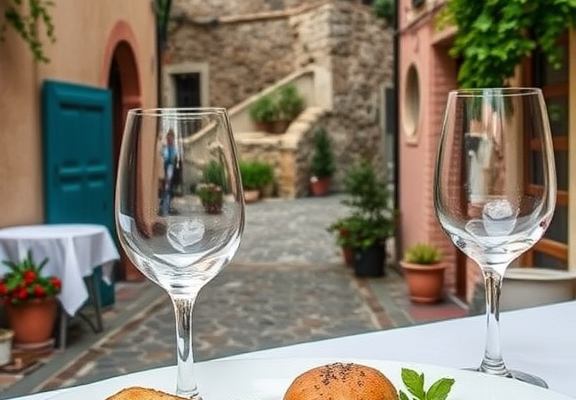Exploring the Unique Flavors of Michelin-Star Restaurants in Tokyo
Tokyo boasts an impressive culinary landscape, and its Michelin-star restaurants are the pinnacle of fine dining. These restaurants blend traditional Japanese techniques with innovative flavors that keep food enthusiasts coming back for more. If you’re keen to explore the unique tastes of Michelin-star dining in Tokyo, you’ll find an unforgettable experience awaits you at every turn.
Thank you for reading this post, don't forget to subscribe!What sets Michelin-star restaurants apart is not only their commitment to quality but also their emphasis on fresh, seasonal ingredients. Chefs in these establishments often source their produce from local markets, ensuring that every dish reflects the essence of Japanese cuisine. Each restaurant has its flair, incorporating unique flavors and presentations that tell a story on your plate.
Here are some key reasons why the Michelin-star restaurants in Tokyo offer such unique flavors:
- Masterful Techniques: The chefs have mastered age-old Japanese cooking methods. They use techniques like kaiseki (a multi-course meal) to highlight seasonal ingredients, emphasizing natural flavors.
- Attention to Detail: Every element in a dish is carefully considered. From the choice of ingredients to the color palette and plating, aesthetic appeal plays an important role in the dining experience.
- Cultural Fusion: Many chefs incorporate global influences into their dishes, blending traditional Japanese components with flavors from around the world. This fusion creates dynamic taste profiles that excite your palate.
When it comes to specific Michelin-star establishments, here are a few notable restaurants that offer distinctly unique flavors:
- Sukiyabashi Jiro: Renowned for its sushi, this restaurant is legendary in the culinary world. Jiro Ono, the head chef, emphasizes the quality of his fish, which is sourced daily. The sushi here melts in your mouth, providing a taste of the ocean like no other.
- Tempura Kondo: Specializing in tempura, Kondo serves beautifully light and crispy dishes using fresh vegetables and seafood. Each bite retains the natural flavors, expertly seasoned with just the right amount of salt.
- Narisawa: This innovative restaurant emphasizes sustainability. The menu changes according to the seasons, spotlighting local produce. Dishes here are as much about art as they are about taste, with a clear focus on the environment.
- Ginza Kojyu: Known for its kaiseki meals, this dining destination reflects the traditional Japanese approach to cuisine. Each dish serves as a work of art with stunning presentation, showcasing ingredients from various regions in Japan.
Exploring the flavors in a Michelin-star restaurant is more than just about food—it’s an experience. The ambiance in these restaurants enhances the taste, with many places offering elegant settings that contribute to the overall dining delight. The service is impeccable, with knowledgeable staff ready to guide you through the menu, ensuring that you feel well taken care of.
Another appealing aspect of dining at Michelin-star restaurants in Tokyo is the seasonal changes in the menu. Many chefs take pride in crafting dishes that celebrate the current season, providing a unique experience each visit. Depending on when you go, you might discover a different interpretation of a classic dish, making it not only satisfying but also an exploration of what Japanese cuisine can offer.
For food lovers and culinary adventurers, Tokyo’s Michelin-star restaurants are not to be missed. Each restaurant offers a delightful journey through history, culture, and flavors that are unique to Japan. You’ll find yourself savoring each bite while appreciating the artistry and passion that goes into preparing the food.
Whether you’re a sushi aficionado or someone new to Japanese cuisine, dining in Tokyo’s Michelin-starred establishments promises to impress. You’ll leave not only full but also enriched by an extraordinary culinary experience that highlights Japan’s rich gastronomic heritage.
The Impact of Michelin Guides on Tokyo’s Culinary Scene
When it comes to fine dining, few cities can rival Tokyo, renowned for its diverse and exquisite culinary offerings. The Michelin Guide has played a pivotal role in shaping Tokyo’s culinary landscape, propelling it to the forefront of gourmet experiences worldwide. With the largest number of Michelin-starred restaurants in any city, Tokyo’s culinary scene has become a hotbed for aspiring chefs and seasoned gourmands alike.
The arrival of the Michelin Guide in Tokyo has transformed how diners view and experience food. Not only does it enhance the prestige of the restaurants that receive accolades, but it also promotes a culture of excellence among chefs and restaurateurs. This movement encourages establishments to innovate while maintaining high culinary standards, leading to an ever-evolving dining experience.
One of the most significant impacts of the Michelin Guide on Tokyo is the increased visibility it brings to smaller, lesser-known eateries. Many of these hidden gems have been awarded stars, allowing them to shine on an international stage. This mainstream attention often leads to long waiting lists and heightened interest from tourists eager to indulge in authentic Japanese cuisine. Visitors are drawn to restaurants that offer unique, intricate dishes that showcase the heady mix of tradition and innovation that characterizes Tokyo’s food scene.
Moreover, this prestigious guide has fostered a competitive environment among chefs. Restaurants are motivated to elevate their culinary techniques and presentation in hopes of winning or maintaining a coveted star. As a result, diners in Tokyo consistently enjoy meals that are not only delicious but also visually stunning. The presence of Michelin-starred restaurants emphasizes the importance of presentation, making each dish a work of art.
The culinary scene in Tokyo isn’t just about high-end dining; it also reflects the creativity and innovation of local chefs inspired by global culinary trends. Many Michelin-starred restaurants in Tokyo embrace both traditional Japanese flavors and international influences, creating a fusion that appeals to a broader audience. Here are a few notable trends that highlight this dynamic culinary interaction:
- Fusion Cuisine: Chefs are experimenting with blending Japanese techniques with flavors from around the world, resulting in exciting and unexpected dishes.
- Health Conscious Dining: Many restaurants are incorporating seasonal and organic ingredients, catering to the health-conscious diner while also showcasing Japan’s rich agricultural resources.
- Focus on Sustainability: Some Michelin-starred establishments are emphasizing eco-friendly practices, from sourcing ingredients responsibly to minimizing food waste.
- Interactive Dining Experiences: Many restaurants offer chefs’ tables where diners can engage directly with the cooking process, deepening their appreciation for the art of cuisine.
The Michelin rating system has also shaped dining norms among Tokyo’s residents. As more individuals indulge in fine dining, there’s a growing understanding and appreciation for haute cuisine. Diners are increasingly seeking out Michelin-rated establishments, elevating their expectations from food quality to service and ambiance. This shift inspires non-starred restaurants to raise their game, resulting in an invigorated culinary environment where even casual dining spots are striving for excellence.
For chefs, earning a Michelin star can be a career-defining moment. It can lead to opportunities for elevation, providing them with the chance to open new restaurants or even inspire others through mentorship. However, the pressure to maintain high standards can be intense. Once a star is awarded, restaurants must continually innovate and refine their crafts to meet the expectations of discerning diners and Michelin inspectors.
The Michelin Guide’s influence extends beyond just the restaurants it rates. It has also sparked a burgeoning interest in culinary tourism in Tokyo, attracting food lovers from around the globe eager to taste Michelin-starred dishes. This tourism boom aids local economies and introduces a wider audience to the rich tapestry of Japanese culinary culture.
The Michelin Guide has significantly impacted Tokyo’s culinary scene, creating a rich tapestry of dining experiences marked by excellence, innovation, and interactivity. From boosting visible culinary talent to inspiring local chefs to aim higher, the guide continues to shape what it means to eat well in one of the world’s gastronomic capitals. Whether you are a local or a traveler, indulging in the offerings of a Michelin-starred restaurant in Tokyo promises an unforgettable culinary journey.
Conclusion
Tokyo’s culinary landscape is a vibrant tapestry woven from centuries of tradition and innovation, and Michelin-star restaurants stand at the pinnacle of this rich culture. Each dining experience offers a unique flavor that reflects not only exceptional cooking techniques but also the artistry and care invested by talented chefs. From meticulously crafted sushi to inventive kaiseki, every dish celebrates the harmony of tastes and textures that define Japanese cuisine.
The influence of Michelin Guides on Tokyo’s food scene cannot be overstated. They have not only set the global standard for excellence in dining but have also spurred local chefs to push their creative boundaries. Restaurants aspire to achieve and maintain Michelin stars, fostering a spirit of competition that elevates the quality of food throughout the city. This relentless pursuit of gastronomic perfection means that every visit to a Michelin-starred venue in Tokyo is a guarantee of an unforgettable culinary journey.
As you navigate the streets of this bustling metropolis, the allure of Michelin-starred establishments will beckon you to explore their exceptional offerings. Whether you are a seasoned foodie or a curious traveler, diving into the world of Tokyo’s Michelin-star restaurants promises an opportunity to experience some of the finest dining on the planet. Food enthusiasts can immerse themselves in these culinary jewels, discovering the flavors and stories that make Tokyo a gastronomic capital like no other. Embrace the adventure and let each bite take you on a remarkable journey through the heart of Japan’s culinary artistry.

